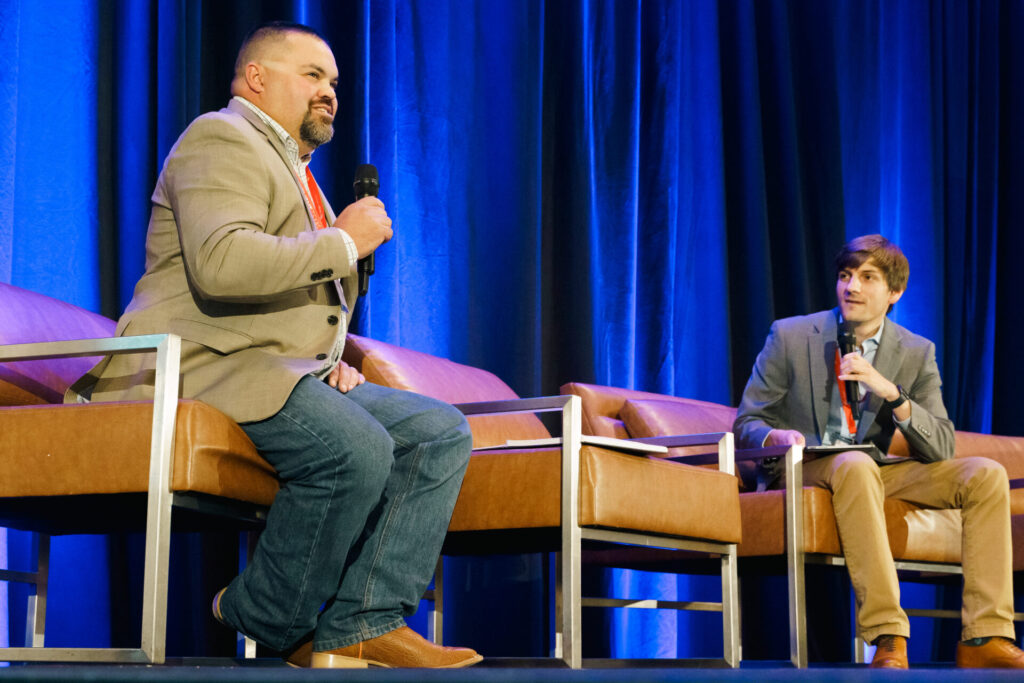Four Takeaways from Solarplaza’s First Texas-Focused Summit
Will Troppe, Director of Product at Power Factors, shares insights from Solarplaza’s Summit Asset Management Texas in Austin, TX, on October 25, 2022.
In February 2021, Winter Storm Uri delivered a double-blow to Texas’ energy infrastructure, spiking heating load while rendering pipelines and power plants inoperable. The resulting supply-demand imbalance threatened a weeks-long catastrophic grid failure; in response, grid operators at ERCOT intentionally shed load, sparking several days’ worth of rolling blackouts to prevent something much worse.
The storm combined the esoteric nature of ERCOT power markets, electric grid infrastructure, climate-change-induced weather anomalies, infrastructure hardening, preventive maintenance windows, and clean energy growth. Indeed, clean energy, ultimately acquitted as a major contributor to the storm’s fallout, is booming in Texas. The state installed more than twice as much clean energy in 2021 as California, the second-highest state. (Turns out, everything really is bigger in Texas.) Long-dominant in wind energy, Texas’ 2022 pipeline is led by solar. The Inflation Reduction Act will only boost both technologies further.

I was delighted to attend Solarplaza’s inaugural Texas Asset Management Summit in Austin amidst this local and national backdrop. Texas may have its roots in “black gold,” but its future is increasingly green.
Here are four key takeaways I gleaned from presentations and conversations during the event:
1. Solar and storage help navigate transmission constraints
Texas dominates US energy production, and it has no plans to give up its mantle. Energy companies in the state are betting on clean energy to maintain growth. Texas now ranks first in the US for most installed wind power, and second for solar and storage, but Winter Storm Uri provided a stark reminder that grid investments have not kept pace with generation: “Transmission is always 5-10 years behind supply,” one panellist said, reducing grid reliability and leading to curtailment losses that introduce financial risk.
For developers, the growth of solar and storage offer a solution. Solar in Texas can be built almost anywhere, including nearby load centers, while energy storage enables owners to store power and dispatch it when needed. Storage translates financial risk caused by supply-demand imbalances into a revenue-generating opportunity. Further, the Inflation Reduction Act will lead to a cumulative 60GW of installed storage nationwide by 2026, per Wood Mackenzie — roughly 75% of the peak capacity of Texas.
Solar and storage are inextricably linked: a reported 40% of storage capacity in the US is collocated with generation, mainly solar, and 70% of the pipeline is collocated. Asset management plans and tools must accommodate.
2. IRA, ITC, PTC, OEMs, and EPCs: Tax credit extensions will change the optimization game
The Inflation Reduction Act (IRA) extended the Solar Investment Tax Credit (ITC) from 2023 to 2032 and added an option for solar owners to select a Production Tax Credit (PTC) instead. The PTC promises to change the operating paradigm for solar power: production matters. If your site isn’t operating at its peak, or if it’s curtailed, then it will miss out on PTC benefits.
In a world with a solar PTC, the modelling of solar projects changes too.
With the ITC, there is significant pressure on owners and engineers to configure their solar models to output the best theoretical production profile. This has sometimes led to overly optimistic assumptions, sometimes on the order of 3-5%, that only become clear during project operations. Generous models don’t impact tax equity investors in ITC projects, which pay out when the project comes online, but is a reality check with the PTC in which revenue is limited by “physically possible” production, rather than as-modelled production.
To align incentives, owners of projects subject to the PTC will look to transfer production risks to O&M companies. O&Ms, in turn, will hesitate to accept responsibility for overly optimistic production models they played no role in generating. Owners should look to partner with O&Ms who have a track record of performance and are comfortable providing pre-production feedback to project developers, original equipment manufacturers (OEMs), and engineering, procurement, and construction (EPC) companies.
Ultimately the industry needs to rein in production models and get smarter about monitoring and maximizing project output. The right asset performance management software can help.

3. Digital solutions empower expert field technicians
O&M comes down to getting the right person — with the right training, tools, and spare parts — to the right site at the right time. Qualified field technicians are irreplaceable in keeping clean energy facilities operational and, consequently, the lights on at home. Yet anecdotal evidence I gathered in my discussions indicates our industry is facing a dearth of techs with the required skills in the labor market.
To fill these gaps, O&M companies are preaching a “hire, train, retain” model of field technicians, developing comprehensive training programs to teach electricians the trade and retain employees. Forward-looking companies are digging deeper, developing labor pipelines through internship programs and partnerships with trade schools, community colleges, and universities.
Just like the right tool can save the day in the field, digital solutions can make or break a field technician’s day. Done wrong, software burdens and distracts. Done right, software empowers technicians: automating time-consuming tasks and providing them with useful, relevant information. Software can detect field issues and suggest resolution steps automatically, rapidly providing the right technician the required context to fix the most urgent issues the first time.
In a world where production, not just upfront investment, will determine a larger portion of a project’s overall returns, O&M teams increasingly will be incentivized to squeeze every last bit of performance out of an asset. Advanced asset management software can serve as a direct window from the central office to field workers. The wind industry has long glorified the role of their field technicians, who climb tall ladders to spend their days in hot enclosures and get covered in grease. Solar industry field technicians, who spend their days in the heat contending with critters and an alphabet of third-party stakeholders, are long overdue for this recognition, too.
4. The beginning of the end of life: Extreme weather and repowering increase module recycling efforts
Hailstorms are relatively common in Texas. Chunks of baseball-sized ice hit solar modules at a terminal velocity of almost 40 miles per hour, according to PV Evolution Labs. Hail caused $70M in damages at a the Midway Solar Project in 2019, breaking over 400,000 of the site’s 685,000 solar modules. Until recently, broken modules sat stacked at sites or went to landfills, polluting rainwater runoff.
An alternative is emerging. Damaged modules, and those discarded during repowering, are largely recyclable, and a number of companies are beginning to spring up to capitalize on the opportunity. It seems only natural that the solar industry return to its environmentalist roots, rounding out the supply chain and ensuring the cleanest possible lifecycle while turning waste into value.

Conclusion
Texas is abuzz with solar activity due to a mix of policy, a free market, technology creating — and solving — problems, and good old-fashioned hard work.
This was my first speaking event since Power Factors bought Inaccess in June. We have now assembled a comprehensive product suite to serve clean power projects at all stages of their life, from development through operations, spanning asset management and optimization, O&M, field service, and, now, controls.
The grid of the future will be at its most resilient when digital assets can work harmoniously with physical assets, orchestrating our future grid. This combination of technologies and skills will ensure a resilient energy ecosystem that lights our homes and warms our bodies — without warming our planet.
Will Troppe is Director of Product at Power Factors. Follow him on LinkedIn!
